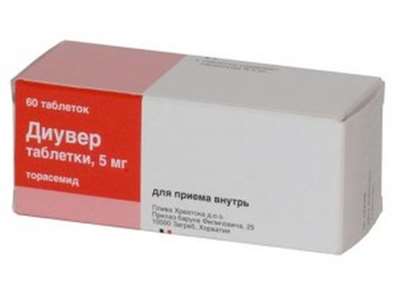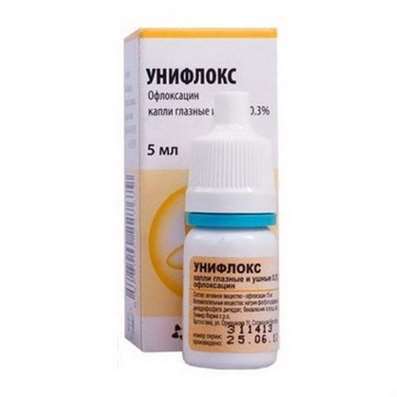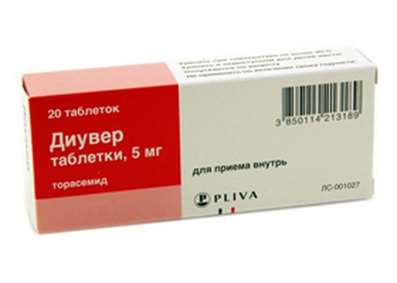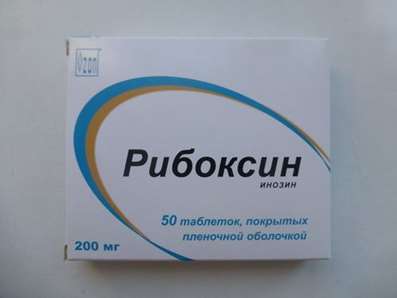Instruction for use: Aprotinin
I want this, give me price
Trade name of the drug ľ Gordoks, Contiral, Aprotex, Aerus, Trasylol 500,000, Inhistrol, Vero-Narcap, Trascolan
The Latin name of the substance Aprotinin
Aprotininum (genus. Aprotinini)
Chemical name
A single-chain polypeptide containing 58 amino acids.
Gross formula
C284H432N84O79S7
Pharmacological group:
Inhibitors of fibrinolysis
Ferment and antiferment
The nosological classification (ICD-10)
A48.3 Toxic shock syndrome: Bacteremic shock; Infectious-toxic shock; Intoxication syndrome; Toxico-infectious shock; Toxic shock; Chronic intoxication in diseases of the digestive tract; Chronic intoxication in gastrointestinal infections; Endotoxin shock
D65 Disseminated intravascular coagulation [defibrillation syndrome]: DIC syndrome; Intravascular coagulation; Hyperfibrinolytic bleeding; Defibrillation Syndrome; Hyperfibrinolytic bleeding; Hyperfibrinolytic bleeding post-traumatic; Hypocoagulant phase of DIC syndrome; Convolation of intravascular disseminated; The syndrome of disseminated intravascular ; Defibrinization syndrome; Coagulopathies acquired
D68.9 Violation of coagulation, unspecified: Multiple bleeding; Violation of blood clotting; Reduced blood clotting; Coagulopathies acquired
I74 Embolism and arterial thrombosis: Thrombosis of effort (stress); Arterial thrombosis; Arteriothrombosis; Subacute and chronic arterial thrombosis; Subacute thrombosis of peripheral arteries; Postoperative thrombosis; Vascular thrombosis; Vascular embolism; Thrombosis of aortocoronary shunt; Arterial thrombosis; Thrombosis of arteries; Coronary artery thrombosis; Coronary thrombosis; Thrombosis of blood vessels; Thrombosis with ischemic stroke; Thrombosis with general surgical operations; Thrombosis in Oncology Operations; Vascular thrombosis; Thrombus formation in the postoperative period; Thrombotic complications; Thromboembolic diseases; Thromboembolic syndrome; Thromboembolic complication in the postoperative period; Thromboembolism of arteries; Partial vascular thrombosis; Embolism; Embolism of arteries
K85 Acute pancreatitis: Acute pancreatitis; Pancreatitis; Pancreatitis haemorrhagic; acute Pancreatitis; Sepsis pancreatogenic; Acute necrotizing pancreatitis; edematous pancreatitis
K86.1 Other chronic pancreatitis: Chronic pancreatitis; recurrent pancreatitis; Pancreatitis chronic; Exacerbation of chronic pancreatitis; Pancreatitis with an exocrine insufficiency
K86.8.1 * Pancreatic necrosis: Pancreatic abscess; Sepsis pancreatogenic; Pancreatic abscesses; Pancreatic necrosis
K94 * Diagnosis of digestive diseases: Hepatic and splenic scans; Visualization of the liver by invasive methods; Isotope scintigrams of the liver; Laparocentesis; Ultrasound examination of the liver; Magnetic resonance imaging of the liver; Computed tomography of the liver; Esophageal Manometry; Anoscopy; Visualization of the biliary tract; Ultrasonic visualization of the liver; Gastroscopy; Degassing of the intestine before diagnostic tests; Degassing of the intestine before X-ray examination; Gastrointestinal diagnostics; Diagnosis of bleeding from the small intestine; Diagnosis of focal pathology of the liver; Diagnosis of secretory ability and acid-forming function of the stomach; Diagnostic intervention on the large intestine; Duodenal sounding; Duodenoscopy; Instrumental studies of the abdominal cavity organs; Intraoperative cholangiography; Irrigoscopy; Examination of gastric secretion; Gastrointestinal tract examination; Study of acid-forming function of the stomach; Examination of secretory function of the stomach; Colonoscopy; Controlling the effectiveness of lithotripsy; Determination of the degree of hypersecretion in duodenal ulcer; Preparation for diagnostic tests; Preparation for X-ray and instrumental methods of abdominal examination; Preparation for X-ray and ultrasound examination of the abdominal organs; Preparation for X-ray or endoscopic examination of the digestive tract; Preparation for X-ray examination of the gastrointestinal tract with contrasting; Preparation for roentgenological examination of gastrointestinal tract with application of barium; Preparation for X-ray and ultrasound of the abdominal organs; Preparation for X-ray examination or ultrasound of the abdominal cavity organs; Preparation for ultrasound and radiographic examination of the abdominal cavity organs; Preparation for endoscopic examination of the lower parts of the colon; Preparation for endoscopic or roentgenologic examination of the lower intestine; Preparation of the lower GI tract for endoscopy; Preparation of the colon for instrumental and radiographic examinations; Preparation of the colon for X-ray and endoscopy; Recto-manoscopy; Rectoscopy; Radiography of the digestive tract; X-ray diagnosis of achalasia of the esophagus; X-ray diagnosis of diseases of the digestive tract; X-ray diagnostics of the digestive tract; Radiocontrast examination of bile ducts; Radiocontrast study of the digestive tract; Radiographic diagnosis of gastrointestinal tract; X-ray examinations of the digestive tract; X-ray examination of the duodenum and gallbladder; X-ray examination of the stomach; X-ray examination of the biliary tract and gallbladder; X-ray examination of the digestive tract; X-ray examination of the esophagus; Retrograde cholangiopancreatography; Retrograde endoscopic pancreatocholangiorentgenography; Sonography of the gastrointestinal tract; Splenoportography; Ultrasound of the abdominal cavity organs; Functional X-ray diagnostics for stomach diseases; Functional X-ray diagnostics for intestinal diseases; Cholangiography; Cholangiography in cholelithiasis; Cholangiopancreatography; Cholecystography; Esophagoscopy; Endoscopic retrograde pancreatography; Endoscopic retrograde cholangiopancreatography; Endoscopic interventions; Endoscopic examination of the digestive system; Endoscopic examination of the lower parts of the large intestine; Endoscopic examination of the digestive tract; Endoscopy; ERCPR; Panendoscopy
N92 Abundant, frequent and irregular menstruation: Metromenorragia; Menorrhagia; Menorrhagia primary; Idiopathic menorrhagia; Menorrhagia; Functional metronormorragia; Primary menorrhagia
O46 Prenatal bleeding, not elsewhere classified: Bleeding during pregnancy
O67 Labor and delivery, complicated by bleeding during labor, not elsewhere classified
O72 Postpartum hemorrhage: Bleeding in the puerperium; Postpartum bleeding
O88.1 Embolism with amniotic fluid
R57.8.0 * Burn shock: Pain shock for burns; Burn shock
R58 Bleeding, not elsewhere classified: Abdominal apoplexy; Hemorrhagia; Haemorrhage of the esophagus; Hemorrhage; Generalized bleeding; Diffuse bleeding; Diffuse bleeding; Prolonged bleeding; Blood loss; Blood loss during surgical interventions; Bleeding during surgery and in the postoperative period; Bleeding during labor; Bleeding and haemorrhage in hemophilia B; Bleeding from the gums; Bleeding intraoperative abdominal; Bleeding against a background of coumarin anticoagulants; Hepatic hepatitis; Bleeding in hemophilia A; Bleeding at hemophilia A; Bleeding with inhibitory forms of hemophilia A and B; Bleeding due to leukemia; Bleeding in patients with leukemia; Bleeding; Bleeding due to portal hypertension; Bleeding due to hyperfibrinolysis; Drug bleeding; Local bleeding; Local bleeding due to activation of fibrinolysis; Massive blood loss; Acute blood loss; Parenchymal hemorrhage; Hepatic bleeding; Postoperative hemorrhage; Kidney bleeding; Vascular-platelet hemostasis; Traumatic bleeding; Threatening bleeding; Chronic blood loss
S02 Fracture of skull and facial bones: Skull fracture dent
T07 Multiple injuries, unspecified: Multiple injuries
T12 Fracture of lower limb, level unspecified: Fracture of limb
T14 Injury to unspecified site: Pain syndrome with trauma and after surgery; Injuries; Extensive trauma to the skin and soft tissues; Muscle and ligament injuries; Injuries; Fibroma traumatic; Acute sport injuries
T78.3 Angioedema: Edema Quincke; Laryngeal exacerbation with angioneurotic edema; Recurrent angioedema; Allergic edema; Recurrent swelling of Quincy
T79.2 Traumatic secondary or recurrent bleeding: Hyperfibrinolytic bleeding post-traumatic
T79.4 Traumatic shock: Haemorrhagic shock; Crash Syndrome; Posthemorrhagic shock; Postoperative shock; Post-traumatic shock; Post-traumatic shock; Traumatic shock; Syndrome of hemorrhagic shock and encephalopathy
T81.0 Bleeding and hematoma complicating the procedure, not elsewhere classified: Bleeding in the postoperative period; Bleeding during transfusion; Bleeding during operations on the brain; Bleeding during surgical interventions; Bleeding after colorectal interventions; Bleeding after prostatectomy; Bleeding during surgery and in the postoperative period; Bleeding due to surgery on the prostate and urinary tract
Z100 * CLASS XXII Surgical practice: Abdominal surgery; adenomectomy; Amputation; Coronary angioplasty; Angioplasty of the carotid arteries; Antiseptic skin treatment for wounds; Antiseptic Hand; Appendectomy; atherectomy; Balloon coronary angioplasty; Vaginal hysterectomy; The coronary bypass; Interventions in the vagina and cervix; Interventions on the bladder; Intervention in the mouth; Restoration and reconstructive surgery; Hand hygiene of medical personnel; Gynecologic surgery; Gynecological intervention; Gynecological surgery; Hypovolemic shock during operations; Disinfection of purulent wounds; Disinfection of wounds edges; Diagnostic intervention; Diagnostic procedures; Cervical Diathermocoagulation; Long-surgery; Replacing the fistula catheters; Infection in orthopedic surgery; Artificial heart valve; cystectomy; Short-term outpatient surgery; Short-term operation; Short surgical procedures; Krikotireotomiya; Blood loss during surgery; Bleeding during surgery and in the postoperative period; Kuldotsentez; laser photocoagulation; laser coagulation; retinal laser coagulation; Laparoscopy; Laparoscopy in Gynecology; CSF fistula; Small gynecological operations; Small surgical procedures; Mastectomy and subsequent plastic; mediastinotomy; Microsurgical operations on the ear; Mukogingivalnye operation; suturing; Minor surgery; neurosurgical operation; Immobilization of the eyeball in ophthalmic surgery; testectomy; pancreatectomy; Perikardektomiya; The period of rehabilitation after surgery; The period of convalescence after surgery; Percutaneous transluminal coronary angioplasty; Pleural thoracentesis; Pneumonia postoperative and posttraumatic; Preparation for surgical procedures; Preparation for surgery; Preparation of the surgeon's hands before surgery; Preparation of the colon for surgical procedures; Postoperative aspiration pneumonia in neurosurgical and thoracic surgery; Postoperative nausea; Postoperative bleeding; postoperative granuloma; postoperative shock; The early postoperative period; myocardial revascularization; Radiectomy; gastric Resection; bowel resection; uterine Resection; liver Resection; enterectomy; Resection of part of the stomach; Reocclusion of the operated vessel; Bonding tissues during surgical procedures; Removal of sutures; Condition after eye surgery; Condition after surgery; Condition after surgery in the nasal cavity; Condition after gastrectomy; Status after resection of the small intestine; Condition after tonsillectomy; Condition after removal of the duodenum; Condition after phlebectomy; Vascular surgery; Splenectomy; Sterilization of surgical instruments; Sterilization of surgical instruments; sternotomy; Dental surgery; Dental intervention in periodontal tissues; strumectomy; Tonsillectomy; Thoracic surgery; Thoracic surgery; total gastrectomy; Transdermal intravascular coronary angioplasty; Transurethral resection; Turbinektomiya; Removal of a tooth; cataract surgery; Removal of cysts; tonsillectomy; Removal of fibroids; Removing the mobile primary teeth; Removing polyps; Removing broken tooth; Removal of the uterus body; Removal of sutures; Fistula likvoroprovodyaschih ways; Frontoetmoidogaymorotomiya; Surgical infection; Surgical treatment of chronic limb ulcers; Surgery; The surgery in the anal area; The surgery on the colon; Surgical practice; The surgical procedure; Surgical interventions; Surgery on the gastrointestinal tract; Surgical procedures on the urinary tract; Surgical procedures on the urinary system; Surgical intervention of the genitourinary system; Surgical procedures on the heart; Surgical manipulation; surgery; Surgery on the veins; Surgical intervention; Vascular surgery; Surgical treatment of thrombosis; Surgery; cholecystectomy; Partial gastric resection; hysterectomy; Percutaneous transluminal coronary angioplasty; Percutaneous transluminal angioplasty; Coronary artery bypass; tooth Extirpation; Extirpation of milk teeth; pulpectomy; pulsative cardiopulmonary bypass; tooth Extraction; teeth Extraction; cataract extraction; Electrocoagulation; endourological intervention; episiotomy; Etmoidotomiya; Complications after tooth extraction
CAS code
9087-70-1
Characteristics of the substance Aprotinin
Obtain from organs (eg, lungs) of cattle.
The activity of aprotinin is expressed in various units: KIE - kallikrein inactivating units; Ph.Eur.U - trypsinin activating units of the European Pharmacopeia, 1 Ph.Eur.U corresponds to 1800 KIE; ATPE - antitrypsin units, 1 ATPE corresponds to 1.33 KIE; ┼─ - enzyme action units according to the State Pharmacopoeia of the Russian Federation.
Pharmacology
Mode action - Hemostatic, antifibrinolytic, antiproteolytic.
Pharmacodynamics
Aprotinin is an inhibitor of broad-spectrum proteolytic enzymes that have antifibrinolytic properties. Forming reversible stoichiometric complexes - inhibitors of enzymes, aprotinin inhibits the activity of plasma and tissue kallikrein, trypsin, plasmin, etc., reducing the fibrinolytic activity of blood, thus, Having a hemostatic effect with coagulopathy.
Aprotinin inhibits the contact phase of clotting activation, which initiates coagulation with simultaneous activation of fibrinolysis. In conditions of the use of the apparatus of artificial circulation and the activation of coagulation caused by the contact of blood with foreign surfaces, the additional inhibition of plasma kallikrein will help minimize disorders in clotting and fibrinolysis systems.
Aprotinin modulates the systemic inflammatory reaction that occurs in operations using the apparatus of artificial circulation. The systemic inflammatory reaction leads to interconnected activation of hemostasis systems, fibrinolysis, activation of cellular and humoral response. Aprotinin, by inhibiting numerous mediators (kallikrein, plasmin, trypsin, etc.), weakens the inflammatory reaction, reduces fibrinolysis and the formation of thrombin.
Aprotinin inhibits the release of pro-inflammatory cytokines and supports the homeostasis of glycoproteins. Aprotinin reduces the loss of glycoproteins Ib, IIb, IIIa by platelets and prevents the expression of pro-inflammatory adhesive glycoproteins by granulocytes.
The use of aprotinin in surgery during operations with the use of an artificial circulation device reduces the inflammatory response, which is reflected in a decrease in the volume of blood loss and the need for blood transfusion, a reduction in the frequency of repeated revisions of the mediastinum to find the source of bleeding.
It inhibits both the total proteolytic activity and the activity of individual proteolytic enzymes. The presence of antiprotease activity determines the effectiveness of aprotinin in pancreatic and other conditions, accompanied by a high content of kallikrein and other proteases in plasma and tissues. The blockade of kallikrein-kinin system allows using it for the prevention and treatment of various forms of shock.
Pharmacokinetics
Distribution. After intravenous administration, the plasma aprotinin concentration decreases rapidly due to the distribution in the intercellular space with an initial T1 / 2 of 0.3-0.7 hours. The final T1 / 2 is 5-10 hours. The average intraoperative Css aprotinin in plasma is 175 -281 KIU / ml in patients treated with aprotinin during the operation in the following regimen: intravenous loading dose of 2 million KIU, 2 million KIE per primary infusion volume, 500,000 KIU hourly during the entire operation as a continuous I / In the infusion. At application of half doses average intraoperative Css in plasma make 110-164 KIE / ml.
Comparison of pharmacokinetic parameters of aprotinin in healthy volunteers, in patients with cardiac pathology with the use of the apparatus of artificial circulation, and in women under hysterectomy, showed linear pharmacokinetics when doses from 50,000 to 2 million KIE were administered.
80% of aprotinin binds to plasma proteins, 20% of antifibrinolytic activity is carried out by aprotinin, which is in free form.
The equilibrium Vd is about 20 liters, the total clearance is about 40 ml / min.
Aprotinin accumulates in the kidneys and, to a lesser extent, in the cartilaginous tissue. Accumulation in the kidneys occurs due to binding to the brush border of epithelial cells of the proximal renal tubules and accumulation in phagolysosomes of these cells. Accumulation in the cartilaginous tissue occurs due to the affinity of aprotinin, which is the base, to acid proteoglycans of the cartilaginous tissue.
The concentration of aprotinin in other organs is comparable to the concentration in the plasma.
The lowest concentration is determined in the brain, aprotinin practically does not penetrate into the cerebrospinal fluid.
A very limited amount of aprotinin penetrates through GPB.
Metabolism and excretion. Aprotinin is metabolized by lysosomal enzymes in the kidneys to inactive metabolites - short peptide chains and amino acids. Active aprotinin is detected in the urine in a small amount (less than 5% of the administered dose).
Within 48 hours, 25-40% of aprotinin is defined as inactive metabolites in the urine.
Pharmacokinetics in special clinical cases. In patients with terminal renal failure pharmacokinetics of aprotinin has not been studied. In the study of patients with impaired renal function, no changes in the pharmacokinetic parameters of aprotinin have been detected, correction of the dosing regimen is not required.
Application of the substance Aprotinin
Prevention of intraoperative blood loss and reduction of the volume of blood transfusion during aortocoronary bypass surgery using the device of artificial circulation in adult patients.
Pancreatitis (acute, exacerbation of chronic), pancreatic necrosis. Perform diagnostic studies and operations on the pancreas (prevention of enzymatic autolysis of the pancreas during surgery on it and a number of located organs of the abdominal cavity).
Bleeding against hyperfibrinolysis is post-traumatic, postoperative (especially for operations on the prostate gland, lungs), before, after and during labor (including embolism with amniotic fluid); Polymenorrhea.
Angioedema.
Shock (toxic, traumatic, burn, hemorrhagic).
Extensive and deep traumatic tissue damage.
As an auxiliary therapy - coagulopathy, characterized by secondary hyperfibrinolysis (in the initial phase, before the effect after the use of heparin and the replacement of coagulation factors); Massive bleeding (during thrombolytic therapy).
Conduction of extracorporeal circulation.
Prevention of postoperative pulmonary embolism and bleeding; Fat embolism with polytrauma, especially with fractures of the lower extremities and bones of the skull. The use for the treatment of children has not been studied.
Prevention of postoperative mumps.
Contraindications
Hypersensitivity to aprotinin; Patients who have antibodies (IgG) for aprotinin or have established the use of aprotinin for the previous 12 months if it is not possible to detect antibodies (IgG) to aprotinin; Sharply expressed allergic reactions (including on the protein of cattle); Syndrome of disseminated intravascular coagulation (with the exception of the coagulopathy phase); Pregnancy (I and III trimesters); Period of breastfeeding (safety and efficacy not established); Age to 18 years (safety and efficacy not established).
Restrictions
Deep hypothermia; Circulatory arrest during surgery with the use of an artificial circulatory system (risk of developing kidney failure and death); Allergic reactions in the anamnesis (including on the protein of cattle); Previous treatment with aprotinin.
Pregnancy and breast-feeding
The action category for fetus by FDA is B.
Clinical studies on the use of aprotinin in pregnant women have not been conducted. Contraindicated in the I and III trimester of pregnancy. In the second trimester of pregnancy, use is only possible when the intended benefit to the mother exceeds the potential risk to the fetus. In assessing the benefit / risk ratio, one should take into account the adverse effects on the fetus of severe adverse reactions that are possible with aprotinin, such as anaphylactic reactions, cardiac arrest, etc., and the therapeutic measures taken to eliminate these reactions.
The use of aprotinin during lactation has not been studied. At the time of treatment should stop breastfeeding.
Side effects of Aprotinin
Allergic / anaphylactic reactions
In patients receiving aprotinin for the first time, the development of allergic / anaphylactic reactions is unlikely. With repeated administration, the incidence of allergic / anaphylactic reactions may increase to 5%, especially with repeated use of aprotinin for 6 months. With repeated use of aprotinin after more than 6 months, the risk of allergic / anaphylactic reactions is 0.9%. The risk of developing severe allergic / anaphylactic reactions increases if within 6 months aprotinin was applied more than 2 times. Even in cases when repeated application of aprotinin did not observe the symptoms of allergic reactions, subsequent application may lead to the development of severe allergic reactions or anaphylactic shock, in rare cases, with a fatal outcome.
Symptoms of allergic / anaphylactic reactions are manifested by cardiovascular disorders (arterial hypotension), digestive (nausea), respiratory (asthma (bronchospasm) system, skin (skin itching, urticaria, skin rash).
If hypersensitivity develops with aprotinin, immediate administration should be discontinued and standard emergency interventions should be provided - infusion therapy, epinephrine, GCS.
Data on the side effects of aprotinin
The incidence of adverse events was classified as follows: infrequently (≥0.1 and <1%); Rarely (≥0.01 and <0.1%); Very rarely (<0.01%); Frequency is unknown (it is not possible to estimate the frequency from the available data).
From the immune system: rarely - allergic (bronchospasm, hives, itching, rhinitis, conjunctivitis), anaphylactic and anaphylactoid reactions; Very rarely - anaphylactic reactions, up to anaphylactic shock (potentially life-threatening).
From the hemopoietic system: very rarely - coagulopathy, incl. Syndrome of disseminated intravascular coagulation.
On the part of the CVS: infrequently - myocardial ischemia, thrombosis / occlusion of the coronary arteries, myocardial infarction, pericardial effusion, thrombosis; Rarely - arterial thrombosis (with a possible manifestation of impaired function of vital organs such as the kidneys, lungs, brain); Very rarely - thromboembolism of the pulmonary artery; The frequency is unknown - a decrease in blood pressure, tachycardia.
From the side of the central nervous system: the frequency is unknown - psychotic reactions, hallucinations, confusion.
From the urinary system: infrequently - a violation of kidney function (oliguria, acute renal failure, tubular necrosis).
General disorders and disorders at the injection site: very rarely - reactions in the field of injection / infusion, thrombophlebitis, myalgia.
Interaction
Aprotinin inhibits the effects of fibrinolytic drugs, incl. Streptokinase, urokinase, alteplase.
The addition of aprotinin to heparinized blood causes an increase in the coagulation time of whole blood.
Pharmaceutically incompatible with other drugs. Do not mix aprotinin with other drugs when given.
Nevertheless, aprotinin is compatible with a 20% solution of dextrose (glucose), a solution of hydroxyethylated starch, lactated Ringer's solution.
Overdose
No cases of an overdose of aprotinin have been reported. There is no antidote to aprotinin.
Routes of administration
IV, locally, intraperitoneally.
Precaution measures
When using aprotinin, especially with repeated, it is possible to develop allergic / anaphylactic reactions. The risk of developing allergic reactions increases in patients with prior treatment with aprotinin (for 15 days and up to 6 months). Therefore, before use, the benefit / risk ratio must be carefully assessed.
To detect the presence of hypersensitivity, a test should be performed: 10 minutes before the introduction of the main dose of aprotinin, a test dose of 10,000 IUI is administered. If there is any allergic reaction to the test dose, aprotinin should not be used because of possible anaphylaxis. 15 minutes before the administration of the therapeutic dose of aprotinin, the use of blockers of histamine H1 and H2 receptors is possible. However, allergic / anaphylactic reactions can also develop with the administration of a therapeutic dose of aprotinin, even if no adverse reactions were noted during the administration of the trial dose.
When using aprotinin it is necessary to have ready-to-use facilities for an allergic / anaphylactic reaction. If hypersensitivity reactions occur when aprotinin is used, the administration should be stopped immediately and standard measures taken to treat the allergic / anaphylactic reaction.
Patients in whom antibodies (IgG) are detected for aprotinin have a high risk of developing anaphylactic reactions when applied. In this regard, the use of aprotinin in such patients is contraindicated. Prior to the appointment of each patient is recommended to perform a test for the presence of antibodies (IgG) to aprotinin. If the determination of antibodies (IgG) to aprotinin is not possible, patients who can not rule out the use of aprotinin during the previous 12 months, the appointment of aprotinin is contraindicated.
Despite the fact that anaphylactic reactions most often develop with the repeated administration of aprotinin for 12 months, there are reports of anaphylactic shock development at a later time (when repeated administration was performed later than 12 months after the first administration).
When performing an operation on the thoracic aorta using the apparatus of artificial circulation and using deep cold cardioplegia, aprotinin should be applied very carefully against the background of adequate therapy with heparin.
Determination of the activated clotting time is not a standardized test for the determination of blood coagulation, and the use of aprotinin may affect test results. The measurement of the degree of coagulation (ACT) is influenced by various effects during dilution and exposure to temperature. The result of the ACT test with kaolin increases to a lesser extent in the presence of aprotinin than the result of the ACT test with Celite. Because of the difference in the protocols, it is recommended to take minimum values of ACT-test with Celite - 750 s and ACT-test with kaolin - 480 s in the presence of aprotinin, regardless of the effects of hemodilution and hypothermia.
The standard loading dose of heparin administered prior to cancellation of the heart and the amount of heparin added to the primary volume in the circulatory system should be at least 350 IU / kg. An additional dose of heparin is determined by the patient's body weight and the duration of the extracorporeal circulation period.
The method of titration of protamine is not affected by aprotinin. Additional doses of heparin are determined based on the heparin concentration calculated by this method. The concentration of heparin during shunting should not fall below 2.7 U / ml (0.2 mg / kg) or below the level determined prior to the use of aprotinin.
In patients receiving aprotinin, protamine neutralization of heparin should be performed only after interruption of extracorporeal circulation based on a fixed amount of heparin administered or under the control of the protamine titration method.
Aprotinin is not a substitute for heparin.
In hyperfibrinolysis and the syndrome of disseminated intravascular coagulation, aprotinin administration is possible only after elimination of all manifestations of disseminated intravascular coagulation and against the background of preventive administration of heparin.
Influence on the ability to drive vehicles and work with machinery. Data on any effect of aprotinin on the ability to drive vehicles and work with mechanisms are not available. During the application, patients are advised to refrain from driving and working with machinery, and also to be cautious when engaging in activities that require increased concentration and speed of psychomotor reactions.

 Cart
Cart





